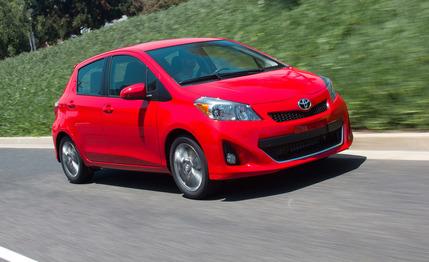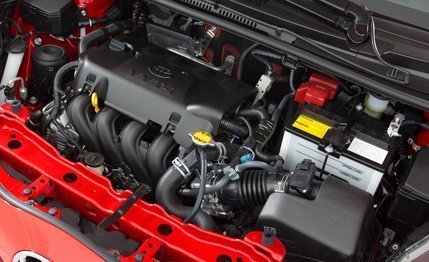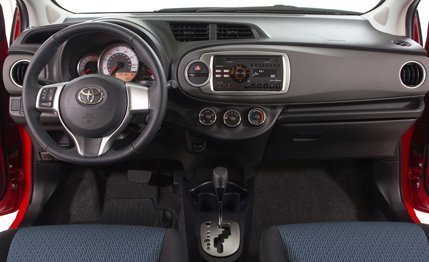 Instrumented Test
Instrumented Test

If you opt to outfit a new Toyota Yaris with an automatic transmission, it adds $725 or $800 to the bottom line. More important, it raises a question: Why would you want to do this?
Sure, most Americans are all about automatic transmissions. A high percentage of our driving is in urban areas, where manipulating a shift lever and managing three pedals can become tedious in heavy-duty, stop-and-go traffic. But “tedious” also applies to this particular automatic, paired with this particular engine. It’s a powertrain combo that diminishes Toyota’s otherwise decent subcompact hatchback, reducing it from worthy option—it finished third of six in a recent comparo—to best ignored.
Toyota did a commendable job in most areas when it redesigned the Yaris for 2012. Unfortunately, the job didn’t extend to the engine bay, which shelters a 1.5-liter long-stroke, twin-cam four-cylinder—106 hp at 6000 rpm, 103 lb-ft of torque at 4200—and a four-speed (!) automatic. The Mazda 2 and the woeful Nissan Versa are the only other cars with four-speed automatic options. (The Versa also offers a CVT.) The Honda Fit has a five-speed slushbox, and the other players offer six-speed autos.

By the Numbers
Stir in modest horsepower—the Mazda 2, the Fiat 500, and the recently introduced Chevy Spark are the only nonhybrid subcompacts that make do with less—and you have a recipe for very deliberate forward progress, in spite of the fact that the Yaris is at the low end of the class chart in curb weight.
In a test earlier this year, a Yaris with a five-speed manual transmission clocked in at nine seconds flat from 0 to 60 mph. The automatic adds a second and a half, and it’s virtually the same story at the quarter-mile. The manual Yaris gets there in 17 seconds at 81 mph; the slushy slushbox version is 1.1 seconds behind and 4 mph slower.
Another contrast: When last we put a Honda Fit automatic through its paces, we recorded 0 to 60 in 9.9 seconds and the quarter-mile in 17.6 seconds at 79 mph. Not only is the Fit slightly quicker, but its paddle shifters also allow effective manual operation. That’s not true with the Yaris automatic, which has an old-fashioned conventional PRNDL dogleg shift gate that defies any manual manipulation that could even remotely be considered satisfying.

And it’s not as if simply setting the shifter in “D” improves the experience. If the driver decides to summon more power for passing, the transmission reluctantly kicks down to second gear, provoking a modest uptick in speed and a not-so-modest uptick in noise. That doesn’t last long. The engine’s 6000-rpm power peak is only 400 revs from redline. Like all contemporary automatics, it’s programmed to climb to top gear ASAP in the interest of fuel economy.
However, fuel economy is another debit for the automatic. Although both transmissions are rated for 30 mpg in city driving, the manual gearbox is pegged at 38 mpg on the highway versus 35 for the self-shifter. We averaged 27 mpg in a little less than 500 miles. The average came in at 33 mpg in our earlier test of a manual-equipped SE model.